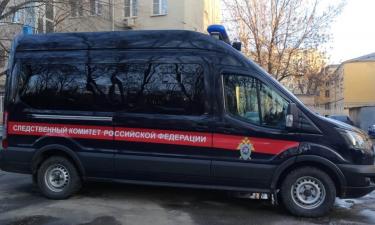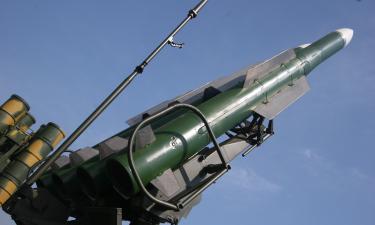USA Fears Loss of Sri Lanka
by John Stanton

“Sri Lanka has been a friend and democratic partner of the United States since gaining independence in 1948 and has supported U.S. military operations overseas such as during the first Gulf War. Commercial contacts go back to 1787, when New England sailors first anchored in Sri Lanka’s harbors to engage in trade. Sri Lanka is strategically located at the nexus of maritime trading routes connecting Europe and the Middle East to China and the rest of Asia. It is directly in the middle of the ‘‘Old World,’’ where an estimated half of the world’s container ships transit the Indian Ocean. American interests in the region include securing energy resources from the Persian Gulf and maintaining the free flow of trade in the Indian Ocean.” Senate Foreign Relations Committee Report, 2009.
Most Americans are not familiar with the long history of relations that Sri Lanka and the USA have together. In fact, most—and to be fair, a good deal of the world’s population—couldn’t pinpoint the country on a map even though Sri Lanka is one of the top trade partners of the USA.
Still, some may know Sri Lanka through the name Mathangi Arulpragasam, better known as M.I.A., a globally recognized musician/singer/artist. Many will remember that science fiction giant Arthur C. Clarke (2001 Space Odyssey) made his home in Sri Lanka. Perhaps a handful will know that Sri Lanka is a Cricket powerhouse.
Others may remember the 2004 Tsunami that destroyed large portions of the Sri Lankan coastline wiping out thousands of lives and leaving many more thousands internally displaced. Some will be familiar with the Sri Lankan’s military defeat of the LTTE—Tamil Tigers—in 2009 after roughly 26 years of conflict. The victory came with a burdensome price tag: thousands killed, nearly 460,000 Tamils/noncombatants confined in holding camps/displaced, and the horrible legacy that is one million landmines that dot former warfighting zones.
So what do they do in Sri Lanka besides producing excellent tea and Cricket players? Here is the industry/services breakdown for 2009:
Sri Lanka’s natural resource base consists of limestone, graphite, mineral sands, gems and phosphate.
The agricultural sector is 12.8 percent of GDP and includes rice, tea, rubber, coconut, and spices. The service industry is 58 percent with key sectors being tourism, wholesale and retail trade, transport, telecom and financial services. The industrial sector comprises 29.2% of GDP and includes garments and leather goods, rubber products, food processing, chemicals, refined petroleum, gems and jewelry, non-metallic mineral-based products and construction.
Major exports (amounting to $7 billion US) in 2009 were garments, tea, rubber products, jewelry and gems, refined petroleum, and coconuts. The main markets for those products were the USA ($ 1.54 billion US), the United Kingdom, India and Italy.
Major suppliers to the Sri Lankan economy were India, Singapore, Hong Kong, China, Iran, Malaysia, Japan, U.K., U.A.E., Belgium, Indonesia, South Korea and the USA (totaling $9.6 billion US of which $283 million was with the USA).
USA-India-China: Sri Lanka as Geopolitical/Economic Battlespace
For US policy makers and military planners, Sri Lanka has now become a top geopolitical priority. A sense of urgency is driving the grand brains in the White House and Pentagon to figure out how “not to lose Sri Lanka.” In short, that means an answer to the question, “How can we use Sri Lanka to further US national security interests in the Indian Ocean?”
“Friendly” economic competition (and the concomitant struggle for resources, markets, jobs) between the USA and China/India will inevitably move to military conflict at some future date. Why? There simply are not enough energy stores in the world to meet the needs of the three nations which, combined, make up 41 percent of the world’s population. And this excludes Indonesia and Brazil whom together make up just over 6 percent of the world’s population. The five nations make up 47 percent of the world’s population and their hunger for energy, raw materials, food, construction materials, “the better life”, is insatiable. All are pre-positioning for economic security which, of course, is an element of national security.
In State and Corporate governing circles within the five countries (USA, India, China, Indonesia, Brazil), there is a far graver threat to be dealt with: the prospect of restive populations revolting as their job prospects darken, social programs are cut, income inequality increases, and health/pension benefits become more restricted, even eliminated. Meanwhile, up above, the losing classes watch as their nation’s stock exchanges operate as though it’s business-as-usual. In this volatile environment, internal mass dissent/boycotts are, arguably, the number one threat to each nation’s security.
So where does Sri Lanka fit in?
“Indian threat perceptions have grown as China has become more active in South Asia. Sri Lanka is no exception,” said Maria Kuusisto of Eurasia Group in an interview with Kari Lispschutz of World Politics Review. “Chinese investment has expanded rapidly, including the strategically situated commercial deep-sea port in Hambantota -- which is [Sri Lankan] President Mahinda Rajapakse's home constituency -- and the two-phase coal power plant in Norochcholai. During the civil war in Sri Lanka, Beijing provided unconditional diplomatic, economic and military support to the Sri Lankan government, winning significant goodwill in Colombo. And China is now offering to provide financing and technical expertise to the Sri Lankan government, which is pursuing an aggressive, multi-million dollar reconstruction program. New Delhi sees this Chinese maneuvering as an incursion into its historic sphere of influence, and is consequently trying to outbid the Chinese for strategically important infrastructure projects.”
While India and China solidify their relationships with Sri Lanka, the USA/West has had a muddled foreign policy that seems to always be fixated—no matter the region--on Iran and China. Writing in Future Directions International, Sergei DeSilva-Ranasinghe indicated that the European Union used the war crimes card following the defeat of the LTTE simply to punish Sri Lanka for its trade relations with Iran and China, not out of any great concern for human rights.
“Following the LTTE defeat in May, the EU sought to pursue a motion against Sri Lanka for war crimes investigations at the UN Human Rights Council, which collapsed when 29 countries of the 47-member council voted in solidarity with Sri Lanka. India itself came out strongly in support of Sri Lanka at the Council and later even criticized the office of the United Nations High Commissioner for Human Rights. Commenting on Sri Lanka’s diplomatic feat, Sri Lankan Ambassador to the United Nations, Dayan Jayatillaka, said: ‘This is not a lesson that Sri Lanka taught the West. It is a victory of the developing countries and the global south. It was not a defeat of the Tiger Diaspora alone.
It was the defeat of a powerful bloc of forces. Geneva was a miniature diplomatic Dien Bien Phu or Bay of Pigs for the EU. The unfolding events earlier this year underscored the fact that Sri Lanka’s confrontation with the West, which has seen relations plummet to their lowest point since the 1970s, has had less to do with human rights and more to do with a fierce geopolitical struggle for influence. There is little doubt that Sri Lanka’s move to broaden relations with China and Iran, its rejection of Western demands in its internal affairs, the timing of its victory over the LTTE, and its acceptance in June 2009 as a Dialogue Partner to the Shanghai Cooperation Organization (SCO) were crucial in influencing the West’s attempts to take punitive action against Sri Lanka — moves which served to further strengthen Sri Lanka’s relations with China.”
Senate Foreign Relations Report 2009: The Americans Are Coming! The Americans Are Coming!
The Sri Lanka Foundation (SLF) reports that former Sri Lankan military commander Sarath Fonseka was favored by the USA to win the Sri Lankan presidential election in 2010 over rival and current president Mahendra Rajapaksa . Fonseka was apparently awarded permanent residency in the USA, according to the SLF, and spent too much time hanging around Washington, DC during the LTTE conflict.
Fonseka is now charged with Criminal Breach of Trust by the Sri Lankan government under Sri Lanka’s Property Act.
Many Sri Lankans here in the USA and in Sri Lanka itself see Fonseka as a tool of the US government and Western interests. Others, of course, don’t.
The SLF derides the Senate Foreign Relations Report of 2009 (see link above, also known as The Kerry Report) as being the product of a dumbfounded US foreign/military policy establishment that was shocked when the Sri Lankan military defeated its LTTE nemesis. Their criticisms of US foreign policy practices (subterfuge, spreading money around via NGO’s, fanning the flames of class conflict) are certainly not without ample historical precedent.
The SLF views the purpose of the Kerry Report as this: “Their mission: to make recommendations to prevent further erosion of US security interests in the island and increase US leverage in Sri Lanka for securing longer term US strategic interests and expanding the number of tools available at Washington’s disposal.”
No problem there, that’s what the large nation’s do.
But then it gets very interesting. SLF goes on to say, “If the LTTE had succeeded, the US would have gained control of two thirds of Sri Lanka coastline, enabling them to secure Persian Gulf energy resources to Japan, interfere if and when the need arose, with the flow of these same resources to China, selectively interfere with free trade in the Indian Ocean, and undermine stability in India by provoking Tamil and Hindu sentiments in Tamil Nadu…To make matters worse, not only did President Rajapaksa destroy the cornerstone of US policy in the region [by defeat of the LTTE], but he was, as The Kerry Report identified, responsible for the country’s drift towards China (and the non-Western world), considered one of the biggest challengers to US hegemony of the world. All this threatens US national security interests, and President Rajapaksa is considered a threat to US National Security. US policy, the report states, has to be re-charted. A regime change is considered imperative: Rajapaksa must go.
The battle lines were drawn for January 26, 2010. The battle was not between Rajapaksa and Fonseka, but between Sri Lanka and the US. On May 18, 2009, Sri Lanka won a historic proxy war on the banks of the Nanthikadal lagoon, defeating the scourge of terrorism [LTTE] and the threat of neocolonialism. Election day was crucial – Sri Lankans had to defeat the neocolonialist if they were to protect their victory at Nanthikadal.
The sovereignty of Sri Lanka is being challenged and is at stake…”
With that in mind, it’s no wonder that Sri Lankan Ambassador Tamara Kunanayakam (Cuba and Venezuela) urged Sri Lankans to study Latin American and USA relations. Writing in Why Latin America is Important for Sri Lanka she states, “ Whereas the economic performance of China and India impress most observers in Sri Lanka and much of our efforts are focused on warding off attacks from our former colonial masters and their allies who continue to have a stake in this country, we have failed to grasp the significance of the history that is being written in Latin America. Sri Lanka cannot remain indifferent to this evolution."The quality of its international relations cannot be appreciated through the narrow vision of those who judge its good health solely through the state of relations with Western powers. Sri Lankan foreign policy must take into account the reality of a world that is changing and Latin America as constituting an important factor in that change.”
Become the Switzerland of the Indian Ocean
How can Sri Lanka—with 21 million people, just .3 percent of the global populace—rebuild and reunite its tattered country after 26 years of war and a Tsunmai, while at the same time avoid Faustian economic and military bargains with the world’s giant nation-states? Can its leaders avoid the lure of bribes (in any form), the sweetheart deals that will inevitably be forthcoming, and the trappings of power?
Can the Sri Lankan people calm the ethnic turbulence between (Sinhalese, Tamil and Muslim) that has plagued it and develop a common national consciousness/identity?
Can Sri Lanka avoid getting tangled in the competition between the world’s largest nations that will only escalate in the future?
DeSilva-Ranasinghe made this observation. “ So far, at least, Sri Lanka appears to have successfully balanced the competing interests of India and China.” He cited the commentary of a former Sri Lankan diplomat named Jayantha Dhanapala on the delicate balancing act.
“There are elements in America and India who would like to raise the China bogey…This is not a zero sum game where our relationship with China is at the expense of our relationship with India. We cleverly balanced the relationship.”
How long that relationship can be balanced remains to be seen.
As they rebuild their country and amend their constitution, they would do well to look to Switzerland as an example of a neutral—even sane---nation state. Their survival may depend on it.
With the USA shifting focus and resources to the Indian Ocean, they’d best move quickly and warily.
John Stanton
Subscribe to Pravda.Ru Telegram channel, Facebook, RSS!




